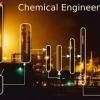Two common methods for calculating the relief load for a tube rupture with vapor on the high pressure side under critical flow:
1) Perry's (8th edition) Equation 10-31
wmax = CA (g * k * (P1/ V1) * (2/(k+1))^ ((k+1)/(k-1)))^0.5
2) Wing-Wong Paper
wmax = CA (1-0.317 dP/ P1) * dP/P1) (dP/ rho)^0.5
where dP = P1 - P*, where P* is the greater of the relieving pressure or choking pressure
I was under the impression that during choked flow, mass flow varies only with upstream pressure (P1), not with any sort of pressure differential.
Why, then, does Wing Wong's equation seem to go against Perry's?
I tried to calculate using both equations and for the same fluid properties I get vastly different relief loads. Can someone help me navigate these equations, and point out what I might be missing?
Thank you in advance,
Edited by aqassam, 04 November 2014 - 01:21 PM.

 FB
FB









